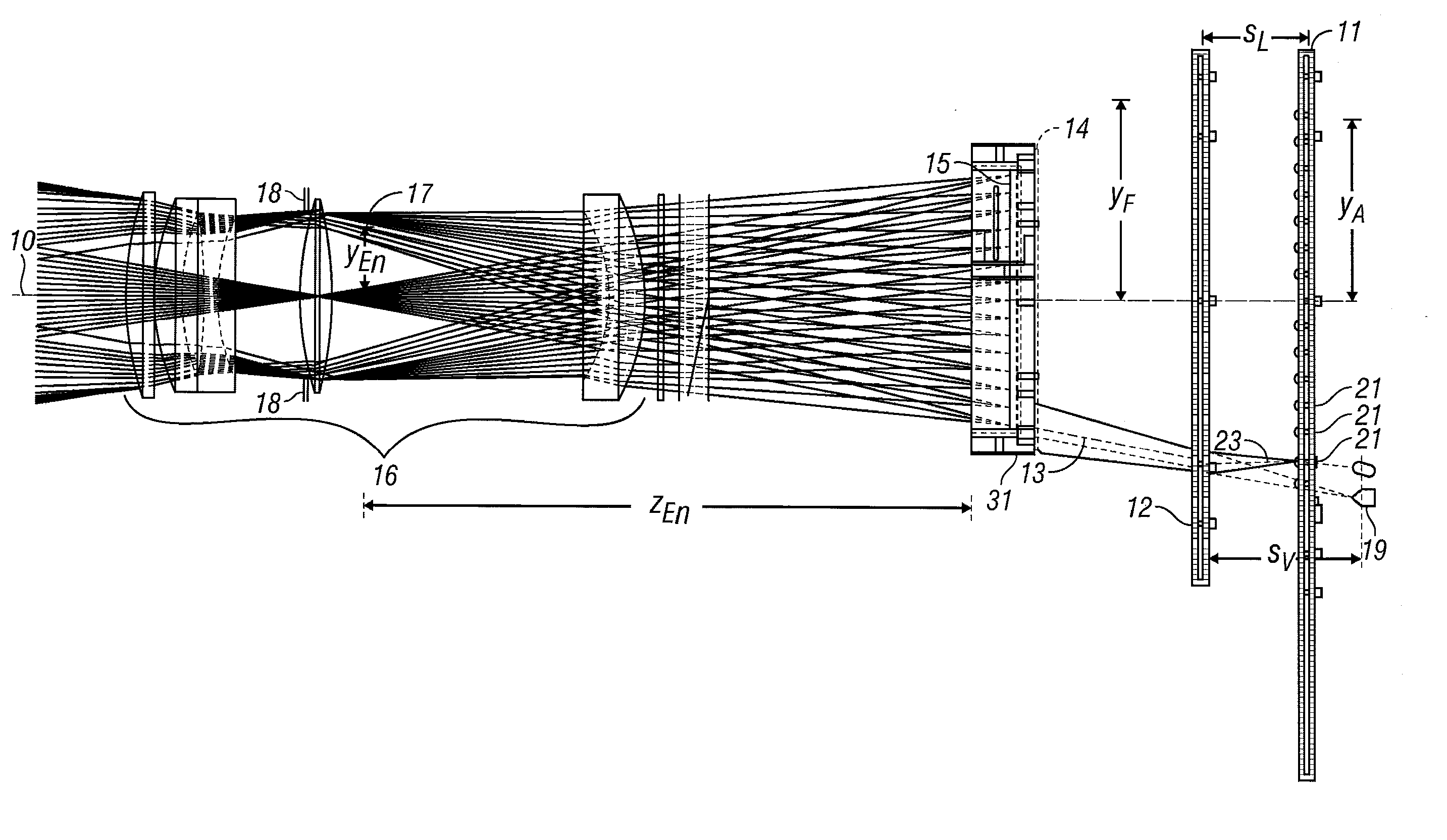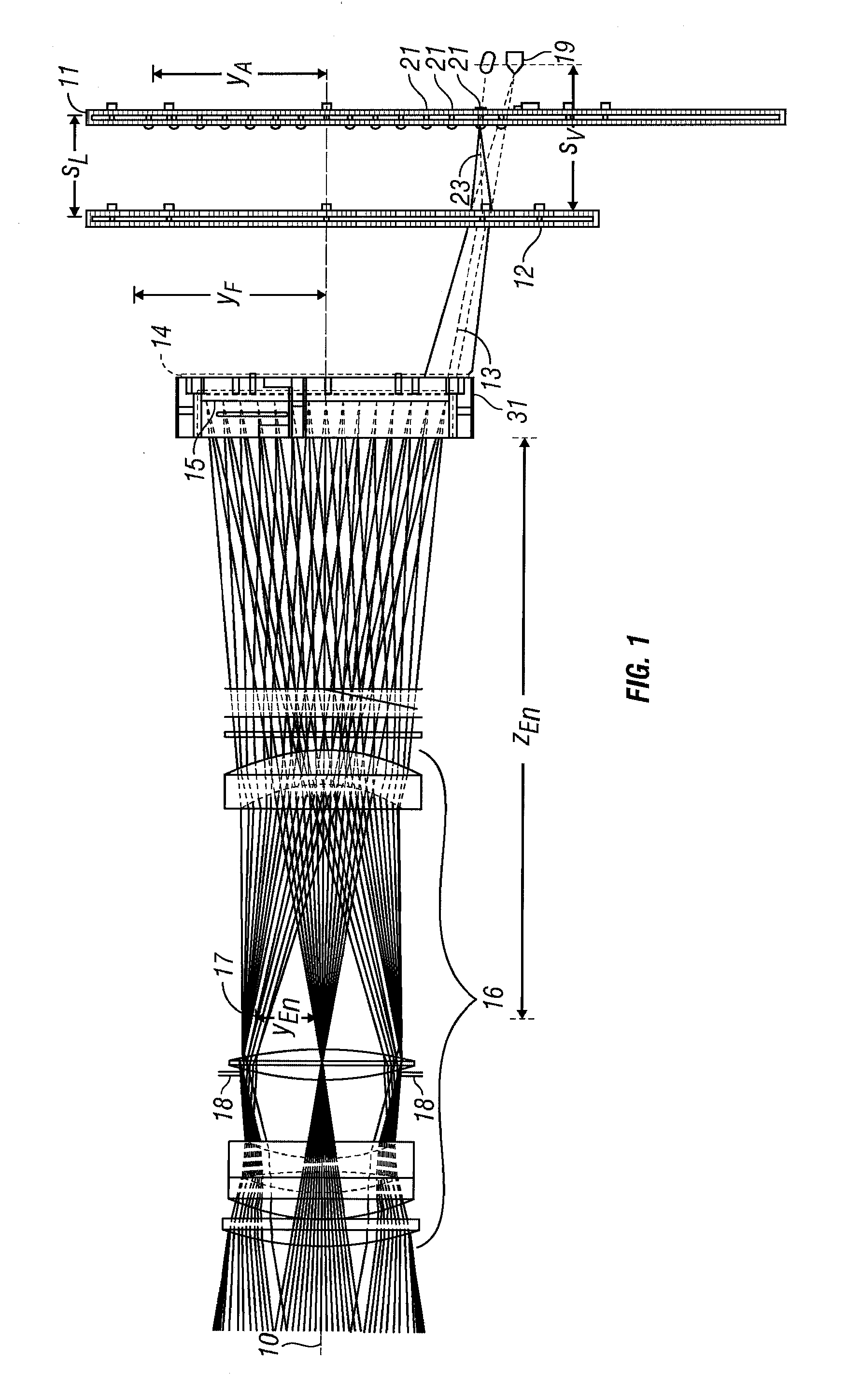Wide field collimator
a collimator and wide field technology, applied in the field of calibrating optical devices, can solve the problems of large size, high power consumption, and high heat dissipation
- Summary
- Abstract
- Description
- Claims
- Application Information
AI Technical Summary
Benefits of technology
Problems solved by technology
Method used
Image
Examples
Embodiment Construction
[0027]A collimator embodied according to the present invention projects a test pattern, focused at infinity, over a wide field of view (FOV). This test pattern contains enough optical energy within the bandpass of at least one spectral channel of an instrument under test (IUT) so that a scanning multispectral sensor can be tested with an adequate signal to noise ratio (SNR). Since the collimator is not used for spectral characterization of the IUT, it is not important to match the spectrum of the operational targets of the IUT, only to achieve the necessary brightness within the selected spectral band. Also, the collimator has sufficient acuity in the spectral band to project the test pattern. This acuity is usually quantified in terms of the modulation transfer function (MTF) at one or more critical angular frequencies.
[0028]Salient optical subsystems of the collimator are an illumination source, a condensing lens assembly, a target plate, a projection lens, and a precision alignme...
PUM
 Login to View More
Login to View More Abstract
Description
Claims
Application Information
 Login to View More
Login to View More - R&D
- Intellectual Property
- Life Sciences
- Materials
- Tech Scout
- Unparalleled Data Quality
- Higher Quality Content
- 60% Fewer Hallucinations
Browse by: Latest US Patents, China's latest patents, Technical Efficacy Thesaurus, Application Domain, Technology Topic, Popular Technical Reports.
© 2025 PatSnap. All rights reserved.Legal|Privacy policy|Modern Slavery Act Transparency Statement|Sitemap|About US| Contact US: help@patsnap.com



